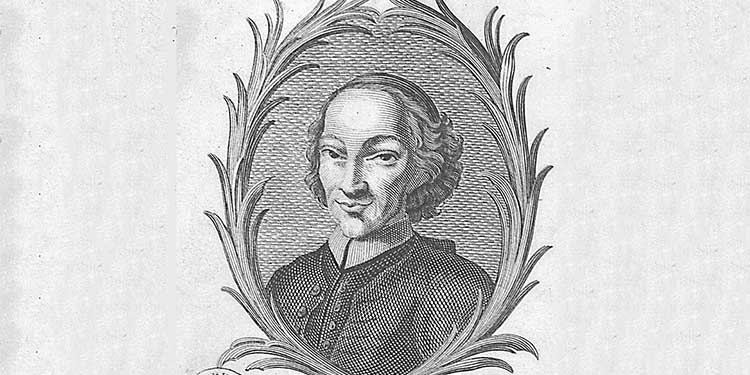Nationality Spanish Citizenship Spain Role Writer | Other names Gran Piscator Name Diego Torres | |
 | ||
Occupation Mathematician, professor, writer, priest Notable work Vida, ascendencia, nacimiento, crianza y aventuras del Doctor Don Diego de Torres Villarroel, Suenos morales, visiones y visitas de Torres con D. Francisco de Quevedo por Madrid Died June 19, 1770, Salamanca, Spain | ||
Monogr ficos zona cero diego de torres villarroel
Diego de Torres Villarroel (1693 – 19 June 1770) was a Spanish writer, poet, dramatist, doctor, mathematician, priest and professor of the University of Salamanca. His most famous work is his autobiography, Vida, ascendencia, nacimiento, crianza y aventuras del Doctor Don Diego de Torres Villarroel (first published 1743).
Contents
- Monogr ficos zona cero diego de torres villarroel
- Life
- Influence of Leonese language
- Works
- List of works
- References

Life

Villarroel was born in Salamanca and baptised on June 18, 1694. His father was a poor bookseller and his mother was a draper's daughter. After an elementary education he went on to study Latin under Juan Gonzalez de Dios, who later became professor of humanities at the University of Salamanca. Villarroel was then enrolled at the Colegio Trilingue in Salamanca. However, at this stage the young Villarroel had little love for learning and his wayward and disruptive behaviour led to trouble with the authorities. It was only when he began to read the books in his father's shop that he discovered a fondness for mathematics and astrology.

Villarroel was in such disgrace with the college authorities that he decided to flee to Portugal where he led an adventurous life in which he was successively a hermit, a dancing-master, an alchemist, a mathematician, a soldier, a bullfighter, a student of medicine and an astrologer. On his return to Salamanca, he settled down to a serious programme of reading books on science, magic and mathematics, while earning his living by publishing almanacs and annual predictions under the pseudonym of "The Great Piscator of Salamanca". In 1724, he successfully predicted the death of the young King Luis I.
In 1723 he moved to Madrid where he made many influential friends. He studied medicine and graduated in the city of Avila. Back in Madrid, he became so poor that he decided to take up smuggling to make money but he was saved by the patronage of the Countess of Arcos, whose house he had tried to rid of a poltergeist.
After a few years, Villarroel once more returned to Salamanca where he learned that the chair of mathematics at the university was empty and decided to apply for the post. He easily defeated his only rival and was made professor, even though his knowledge of the subject was still rudimemtary.
In 1732 Villarroel was banished from Spain for helping his friend Don Juan de Salazar in a dispute which had turned violent. The two had tried to escape to France but had returned to Spain to face the consequences. Villarroel spent his exile in Coimbra, Portugal until a royal decree allowed him back to Salamanca in 1734. From then on he dedicated his time to his post at the university, to writing various works and paying frequent visits to Madrid, where he made the acquaintance of the Duchess of Alba. In 1743 he published the first four chapters of his autobiography, which enjoyed a tremendous success (chapter five appeared some time before 1752 and chapter six in 1758).
In 1750 he was allowed to retire on a pension by royal decree. His life became much quieter and in 1752 he published a complete edition of his works by public subscription. This was highly unusual for the time and attests to Villarroel's popularity as an author. He died on June 19, 1770 at the age of 77.
Influence of Leonese language
Torres Villarroel used elements of the Leonese language in several of his works. Indeed, Leonese language prefixes like "peri" (more), palatalizations (llo, lla, llas), verbal forms like "jicioren" (they made, in Spanish "hicieron"), "salioren" (they went out, Spanish "salieron") or "dixioren" (they said, Spanish "dijeron") often appear in his works.
Works
Villarroel had a poor opinion of his own knowledge of mathematics and science, a result of the low quality of education available in the Spain of his era. As he wrote: "I knew well my ignorance and blindness as I went groping down the alleyways of my profession. But I also knew that I was in the land of the blind, for Spain lay in the grip of a darkness so fearsome that in no school, college or university in any one of its cities was there an individual capable of lighting a lamp whereby one might seek out the elements of these sciences. In the country of the blind the one-eyed man is king" (quoted by Atkinson, page 24).
Today Villarroel is more famous as a writer. In twenty years he received more than 2,000 ducados per year. He was a prolific and popular author on numerous subjects with a style modelled on that of Francisco de Quevedo whose Suenos (satirical visions of Hell) he imitated in his Suenos morales, visiones y visitas de Torres con D. Francisco de Quevedo por Madrid(1727–1751).
He wrote Los desdichados del mundo y la gloria (1737), He also wrote poems and plays, but his most important work is his picaresque account of his own life entitled Vida, ascendencia, nacimiento, crianza y aventuras del doctor don Diego de Torres Villarroel, (1743, with further additions later), divided into six chapters, each dealing with a decade of his life.
He also wrote scientific works such as Anatomia de lo visible e invisible de ambas esferas (1738) and works about the lives of saints (e.g. Vida de Sor Gregoria de Santa Teresa) and poets (Vida de Gabriel Alvarez de Toledo).
Villarroel was a favourite author of the young Jorge Luis Borges.
List of works
Poetry
Sonnets
